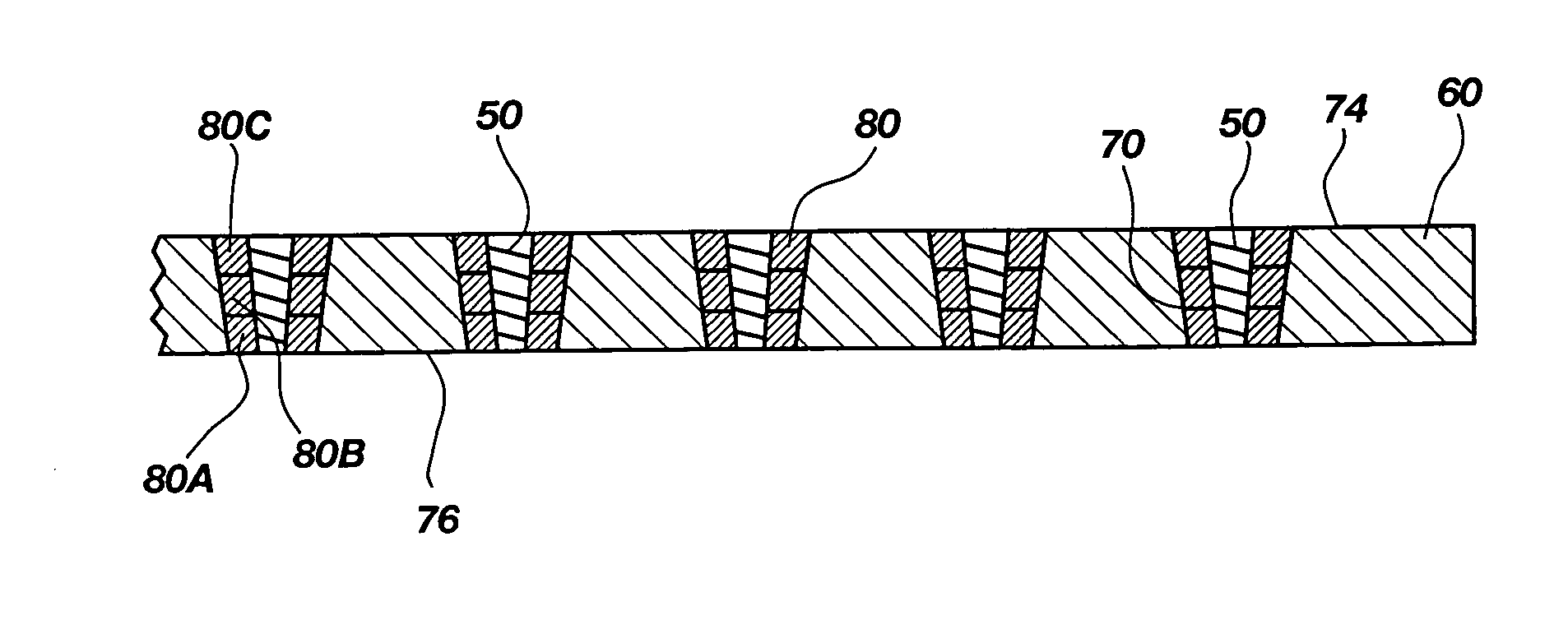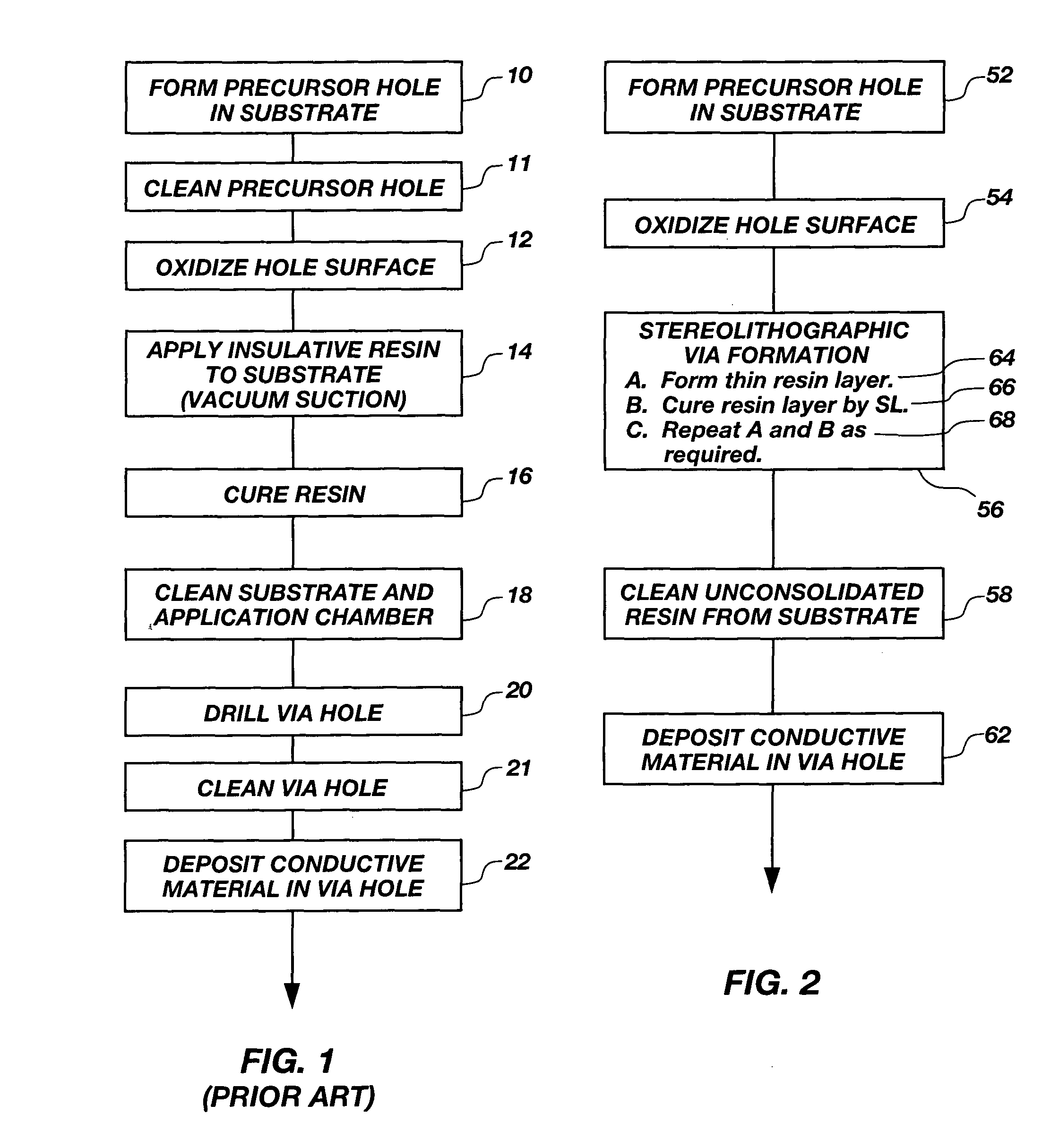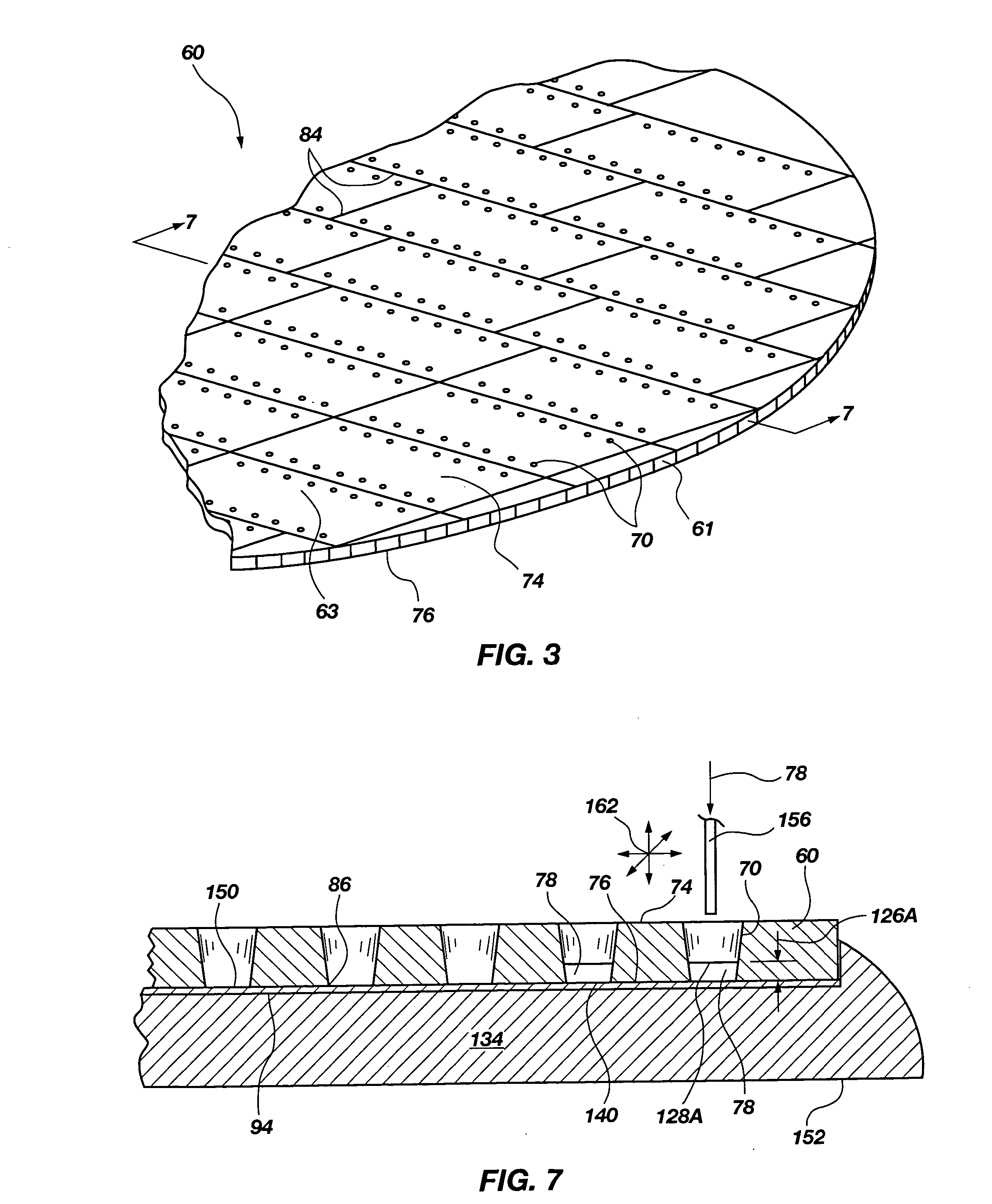Stereolithographic method for forming insulative coatings for via holes in semiconductor devices, insulative coatings so formed, systems for forming the insulative coatings, and semiconductor devices including via holes with the insulative coatings
a technology of conductive metal and insulative coating, which is applied in the field of stereolithographic methods, can solve the problems of unsuitable cleaning equipment for use with relatively delicate structures, lack of machine vision systems, and difficulty in filling high aspect ratio via holes with conductive metals, so as to reduce the amount of unconsolidated materials
- Summary
- Abstract
- Description
- Claims
- Application Information
AI Technical Summary
Benefits of technology
Problems solved by technology
Method used
Image
Examples
Embodiment Construction
[0059] Turning now to the present invention, an exemplary method is outlined in FIG. 2 and illustrated in the remaining figures. The method is useful for lining one or more apertures, such as precursors to via holes 50 (FIG. 13), or “precursor holes”70 (FIG. 8), formed in a substrate 60 with an insulative coating 80 to prevent shorting of conductive vias that are subsequently formed in the via holes. As shown in FIG. 3, substrate 60 may be a full or partial wafer of semiconductive material (e.g., silicon, gallium arsenide, indium phosphide), another large-scale substrate, such as an SOI-type substrate, an insulative substrate (e.g., glass, ceramic, etc.), an electrically conductive material, a flexible or rigid circuit board, an individual interposer or collection of individual interposers, an individual semiconductor device or collection of individual semiconductor devices, or the like. The exemplary substrate 60 shown in FIG. 3 comprises a multichip wafer 61 containing many unsing...
PUM
| Property | Measurement | Unit |
|---|---|---|
| Dielectric polarization enthalpy | aaaaa | aaaaa |
| Electrical conductivity | aaaaa | aaaaa |
| Volume | aaaaa | aaaaa |
Abstract
Description
Claims
Application Information
 Login to View More
Login to View More - R&D
- Intellectual Property
- Life Sciences
- Materials
- Tech Scout
- Unparalleled Data Quality
- Higher Quality Content
- 60% Fewer Hallucinations
Browse by: Latest US Patents, China's latest patents, Technical Efficacy Thesaurus, Application Domain, Technology Topic, Popular Technical Reports.
© 2025 PatSnap. All rights reserved.Legal|Privacy policy|Modern Slavery Act Transparency Statement|Sitemap|About US| Contact US: help@patsnap.com



